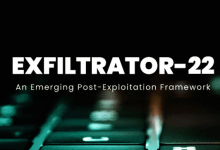Securing Sensitive Data: Learnings from Major Data Leak Incidents
Securing sensitive data is of utmost importance in today’s digital age. With an increasing number of major data leaks incidents, it has become crucial for businesses and individuals alike to learn from these incidents and take necessary measures to safeguard their data. Let’s explore some key learnings from major data leak incidents to understand how we can protect sensitive information.
1. Emphasize proper access controls: One common factor observed in many data leak incidents is the lack of proper access controls. Organizations must ensure that sensitive data is accessible only to those who genuinely need it. Implementing strong authentication protocols, like two-factor authentication, and regularly reviewing and updating user access rights can significantly reduce the risk of unauthorized access.
2. Encryption is vital: Data encryption plays a critical role in protecting sensitive information. Major data leaks have often exposed unencrypted data, making it vulnerable to exploitation. Encrypting data at rest and in transit can make it much harder for unauthorized individuals to access and misuse the information, even if it falls into the wrong hands.
3. Regularly update and patch systems: Many data leak incidents have been a result of outdated software or unpatched systems. Hackers exploit known vulnerabilities, and failing to regularly update and patch systems puts sensitive data at risk. It is crucial to keep software and firmware updated to benefit from the latest security patches and features that can prevent data breaches.
4. Implement robust data classification and segregation: Organizations should classify and segregate sensitive data based on its criticality. By assigning different levels of protection to different types of data, companies can prioritize their security efforts accordingly. This ensures that even if a data leak occurs, sensitive information is not readily available to unauthorized individuals.
5. Regularly monitor and analyze network traffic: An effective way to detect abnormalities and potential data leaks is by continuously monitoring and analyzing network traffic. Employing intrusion detection and prevention systems, as well as security information and event management (SIEM) tools, can help identify unauthorized access attempts, data exfiltration, or any suspicious activities that could lead to a data breach.
6. Educate employees on cybersecurity best practices: Human error is a significant contributor to data leaks. Training employees on cybersecurity best practices and conducting regular awareness programs can help mitigate the risk of accidental data exposure. Topics such as recognizing phishing emails, avoiding suspicious websites, and safely handling sensitive data should be covered during these programs.
7. Conduct regular security audits and penetration testing: Periodic security audits and penetration testing are crucial to identifying vulnerabilities and weaknesses in a company’s infrastructure. By proactively testing their systems’ security measures, organizations can uncover potential entry points for hackers and address them before they result in a data breach.
8. Have a robust incident response plan: Despite taking all possible precautions, data leaks can still occur. Having a well-defined incident response plan can help minimize the potential damage. The plan should include designated response team members, clear communication channels, and predefined steps to mitigate and recover from a data breach.
9. Keep up with regulatory compliance requirements: Compliance with data protection regulations, such as the General Data Protection Regulation (GDPR) or the California Consumer Privacy Act (CCPA), is paramount. These regulations outline specific measures that organizations must take to protect sensitive data. Regularly monitoring and ensuring compliance with such regulations can help prevent major data leaks and the associated legal consequences.
10. Stay informed about emerging threats and best practices: The cybersecurity landscape is constantly evolving, with new threats and attacks emerging frequently. It is crucial to stay updated on the latest trends, vulnerabilities, and best practices in data protection. Subscribing to reliable cybersecurity news sources and participating in industry forums can provide valuable insights into potential risks and effective countermeasures.
The recent surge in major data leak incidents serves as a sobering reminder of the significance of securing sensitive data. Organizations and individuals must learn from these incidents and prioritize data security to prevent unauthorized access and mitigate the potential damage caused by data leaks. By implementing robust security measures, staying updated on emerging threats, and following best practices, we can safeguard sensitive information in the digital world.




Fantastic beat ! I wish to apprentice while you amend your site, how could i subscribe for a blog web site? The account aided me a acceptable deal. I had been a little bit acquainted of this your broadcast offered bright clear concept